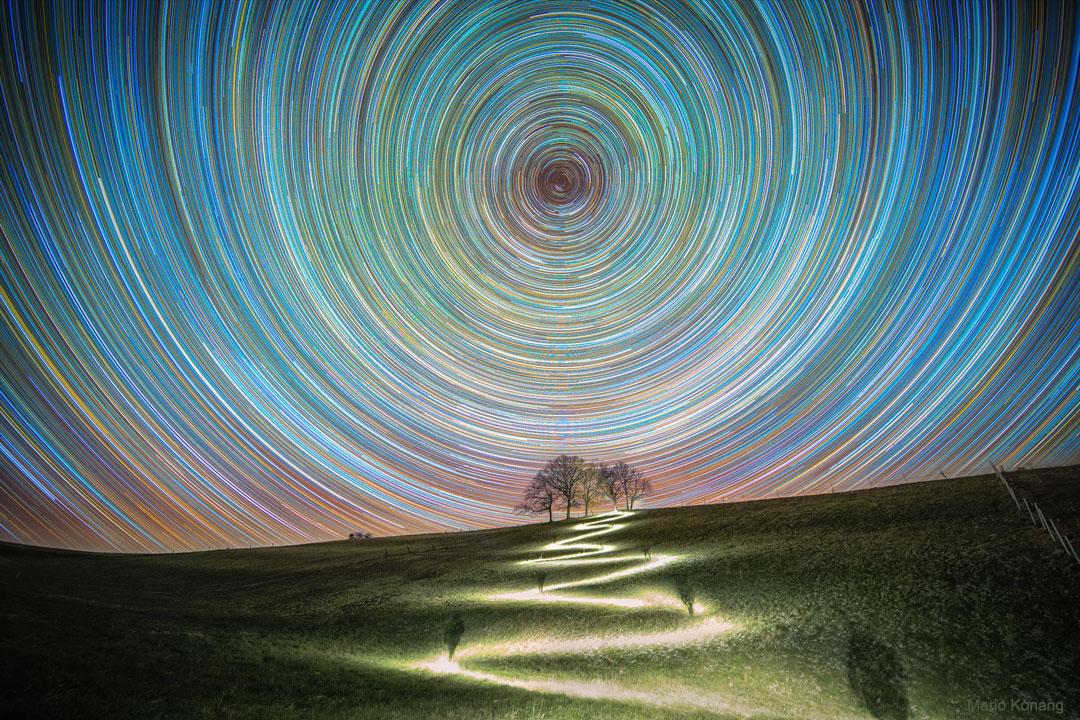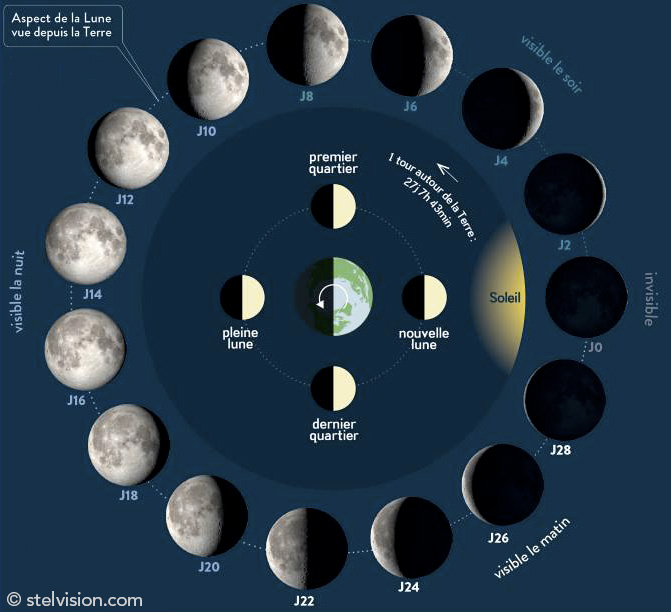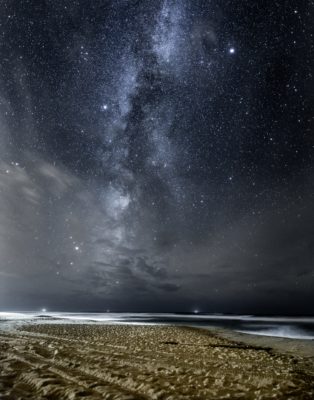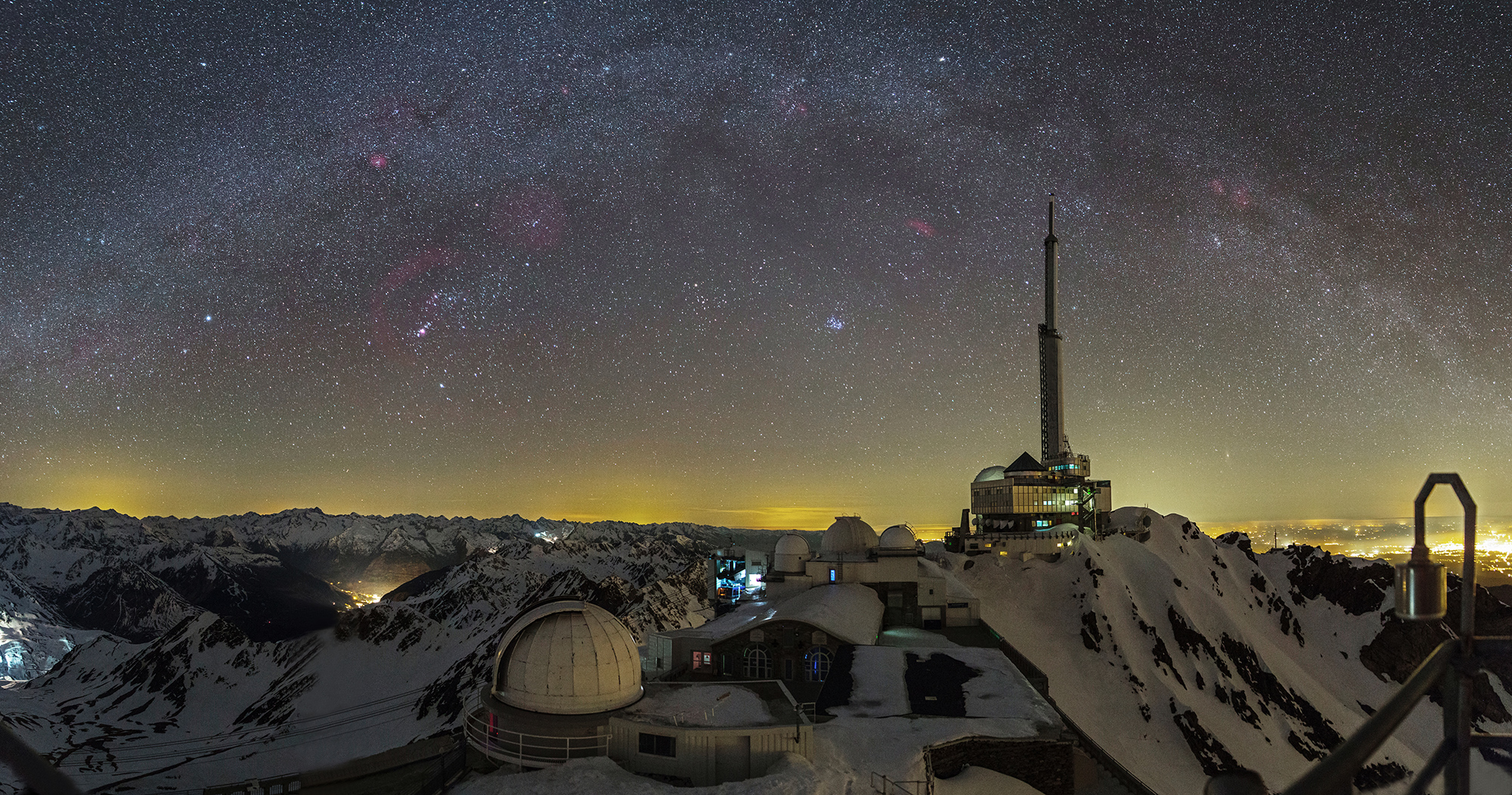
Image Credit & Copyright: Mario Konang
Explanation:
What happens if you keep going north?
The direction north on
the Earth, the place on your horizon below the northern spin pole of the Earth -- around which other stars appear to
slowly swirl, will remain the same.
This spin-pole-of-the-north will never move from its fixed location on the sky -- night or day -- and its height will always match your
latitude.
The further north you go, the higher the
north
spin pole will appear.
Eventually, if you can reach the
Earth's North Pole, the
stars will circle a point directly over your head.
Pictured, a four-hour long stack of images shows
stars trailing in circles around this
north celestial pole.
The bright star near the north
celestial pole is
Polaris, known as the North Star.
The bright path was created by the astrophotographer's headlamp as he zigzagged up a hill just over a week ago in
Lower Saxony,
Germany.
The astrophotographer can be seen, at times, in shadow.
Actually, the Earth has two spin poles -- and much the same would happen if you started below
the Earth's equator and
went south.










